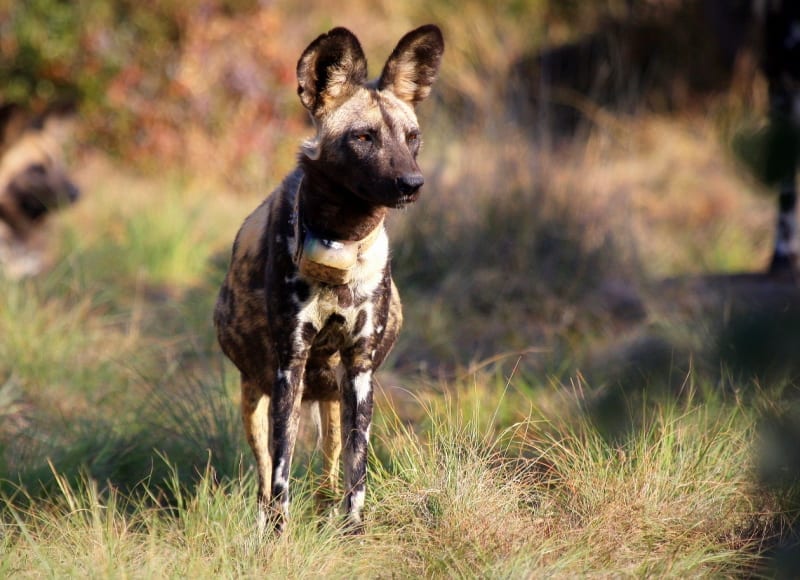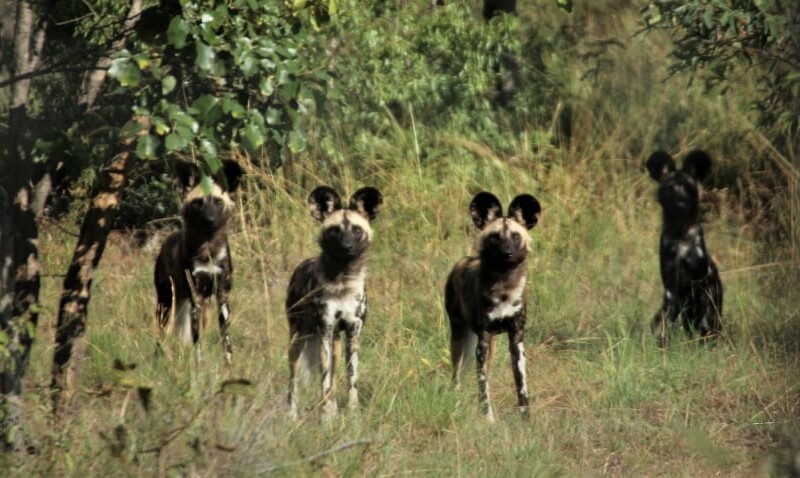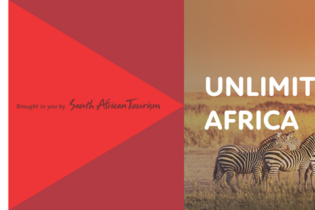Endangered Wildlife Trust (EWT), Lapalala Wilderness Reserve and Tintswalo Lapalala successfully captured and relocated a free-roaming pack of 10 wild dogs to Lapalala Wilderness Reserve in the Waterberg (Limpopo).
The dogs are currently in a boma on the reserve and have adjusted well, says Glenn Phillips, Chief Executive of Lapalala Wilderness; ‘So much so, that we are delighted to announce that the alpha female has produced a litter of pups. The birth of this litter of pups provides a welcome boost to the survival of this endangered species and we look forward to setting them free in the reserve together as a pack when the pups are strong enough, probably around the end of August (2020).”
Painted Dog TV, a conservation media company, has installed bush cameras in the reserve. They are now live streaming footage of the den site, the feeding site and the waterhole, which you can view here:
The African Wild Dog (Lycaon pictus) is one of the world’s most endangered mammals. It is estimated that there are only around 6,500 individuals left in sub-Saharan Africa.
In 2018, the now-relocated pack had only two dogs. Since then it has successfully raised two litters. However, the pack started preying on livestock which led to the decision by the Wild Dog Advisory Group (WAG) to relocate them.
“Growing human populations and the shrinking of habitat suitable for endangered species such as wild dog, makes this conservation project vital for the survival of the species.”
Phillips says, “Growing human populations and the shrinking of habitat suitable for endangered species such as wild dog, makes this conservation project vital for the survival of the species. Lapalala Wilderness is therefore honoured to be part of such an important conservation project.”

The Reserve ecologists have been carefully monitoring the animals in Lapalala’s predator bomas during the post-release period. “By keeping the wild dogs in a large holding boma for a few months, we are attempting to break their inherent instinct to return to the area they originated from, as well as teaching the animals to respect electric fences,” says Herman Muller, Biodiversity Manager at Lapalala Wilderness.
The Lapalala Wilderness Reserve was founded on 48,500 hectares of bushveld in 1981 by conservation champions, Dale Parker and Clive Walker. It is one of the largest private reserves in SA and is recognized as a champion of sustainable wildlife conservation.
Home to the Big 5, Lapalala offers opportunities to see numerous endangered species such as Roan antelope and Black rhinoceros. Boasting breath-taking scenery amongst classic savannah biomes, it offers 27 kilometers of perennial river frontage in the form of the Palala river, 800km of game viewing vehicle tracks, and excellent game viewing. The wildlife in this region is staggering in numbers, including 290 bird species, 60 mammal species, 97 reptile, 19 fish and 17 amphibian species, as well as 169 different types of trees and 25 species of aloe.
The wildlife in this region is staggering in numbers, including 290 bird species, 60 mammal species, 97 reptile, 19 fish and 17 amphibian species, as well as 169 different types of trees and 25 species of aloe.
Says Lisa Goosen, CEO of Tintswalo Lodges, “Our luxury tented camp Tinstwalo Lapalala is operated off the grid and is one of only two lodges within the reserve. It is family friendly and accommodates only 16 adults and four children. The guest experience is unique as one really feels as if you have the reserve all to yourself when out on game drives or wilderness walks. We are very excited about the arrival of the wild dogs in the reserve and soon, we hope our guests will have the opportunity to view the wild dog in their natural habitat within the reserve.”
The reserve also offers excursions to an iron age site to view ancient artefacts and Bushmen rock art paintings, and to the local community based Lapalala Wilderness School.
Cover image: Photographed by Corne Engelbrecht
Pregnant female image: Photographed by Annemieke Muller veterinarian







